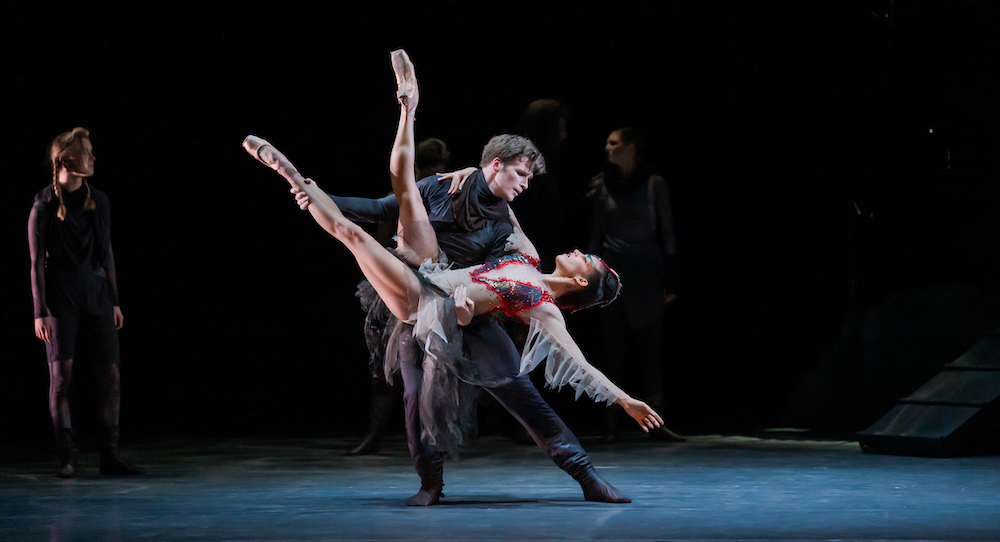You will doubtless have heard something like this before:
“Stories told through dance connect with people and connect people together; and I think this has always been the case. I look to honour ballet’s past and form while also pushing towards the future, with a fascination for finding the contemporary relevance of well-worn tales, as well as adapting new and unexplored stories.”

As an art form, dance – and ballet in particular – is rooted in form, and so often exists in a dialogue, or tussle, with its lineage. From the early days of training, dancers learn a trusted lexicon of movement. It is the language of Pavlova, Nijinsky, Fonteyn, Helpmann, Bausch, Forsythe, et al. At times, it seems like a sacred, unalterable text.
But times change, and new torch bearers emerge. Like Loughlan Prior. A self-described “ridiculously hyperactive, naughty child” whose parents thought ballet might burn off his excess energies, he found his muse in dance. “It was like applying a sort of creative tunnel vision filter to my energy output. The naughtiness stopped, and a life-long passion was sparked.”

These days, Prior is the resident choreographer with the Royal New Zealand Ballet, as well as one half of the mixed art duo Lo ǀ Co. It is in this capacity that he will return to Melbourne (he attended VCASS as a teenager), to speak and give masterclasses at this April’s Energetiks Victorian Dance Festival (VDF).
However, beyond the glittering CV and the various awards, Prior is one of ballet’s visionaries; and his special interest lies in its translation to film. “For someone who struggles with the ephemerality of live theatre, I think film provides an important and expansive way to capture, view, preserve and present dance,” he says. “As a choreographer, it allows you the freedom to explore ideas and technical feats which wouldn’t be possible in a live performance setting. You’re far more in control of the specific choreographic details you want your audience to see. Editing lets you enhance your choreography, and that becomes a huge part of the creative process.”

Under his Prior Visual moniker, he has created dance film works like 2022’s Inklings and had his films screened around the world, from Lincoln Center in New York, to the Short Film Corner at Cannes, and the New Zealand International Film Festival. Here again, the desire is not so much to indulge a plaything as to use the medium as a choreographic tool.
As he explains, “You’re less likely to think about how the dance appears from a wide perspective, like in a proscenium stage space. There’s close-ups, tracking and moving shots, different angles and perspectives. This allows for a really diverse palette of options when developing choreography and helps build three dimensional worlds for the performers to inhabit.”

Having carved a successful niche in this space, Prior is now experimenting with animation and motion capture, both on screen and in the theatre. The key, he insists, is story. Namely, how to tell it. “With constant innovation and new developments in storytelling, and cross pollination with the digital arts, there’s an ocean of inspiration on the horizon.”
It is this inspiration that Prior will look to share with both teachers and students at Energetiks VDF 2023. “I love sharing my practice and creative work with people,” he reveals. “My passion for storytelling and the cinematic approach to choreography, where concept and visual narrative are key…this is how I try to inspire. I always hope to leave an audience, or group of students, with a deeper understanding of what’s possible. And, you know, to dream.”
For masterclass participants, this means a focus on what Prior calls “the broad strokes of my practice.” In a nutshell, co-ordination, speed and performance. Or, as he says it, “Characteristically, my choreography is high energy, fast paced and very musical, and I love creating architectural phrases with the body to challenge dancers. I also like to provide a workout for both body and mind, but keeping things open and enjoyable. After all, dancing is fun.”

Here, we return to the base: the class. People in a room. For all the innovation, this is the core locus of dance art. “For students learning ballet, the ongoing benefits to other dance styles, and to life-skills in general, are wide ranging,” Prior argues. “Training establishes the foundations for complex co-ordination, strength and agility, sensory motor performance, perseverance, flexibility, enhanced learning, and problem solving skills.”
Without necessarily intending to, Prior may well have answered the age-old ‘relevance’ question, in addition to reminding us that the process of dance is never ending. The choreography may sometimes require us to stand still, but dance is forever in motion. No doubt you will also have heard this before.
Come dance with Loughlan Prior at VDF in April at the Melbourne Showgrounds.
Prior will be a keynote speaker at Vitality Teacher Day (dance educator conference and expo) on April 14 and then teach two ballet masterclasses during the Festival weekend workshops on April 15. Don’t miss the opportunity to hear, see and dance with Loughlan Prior. Discounted early bird tickets are at VDF.com.au/tickets
By Paul Ransom of Dance Informa.















